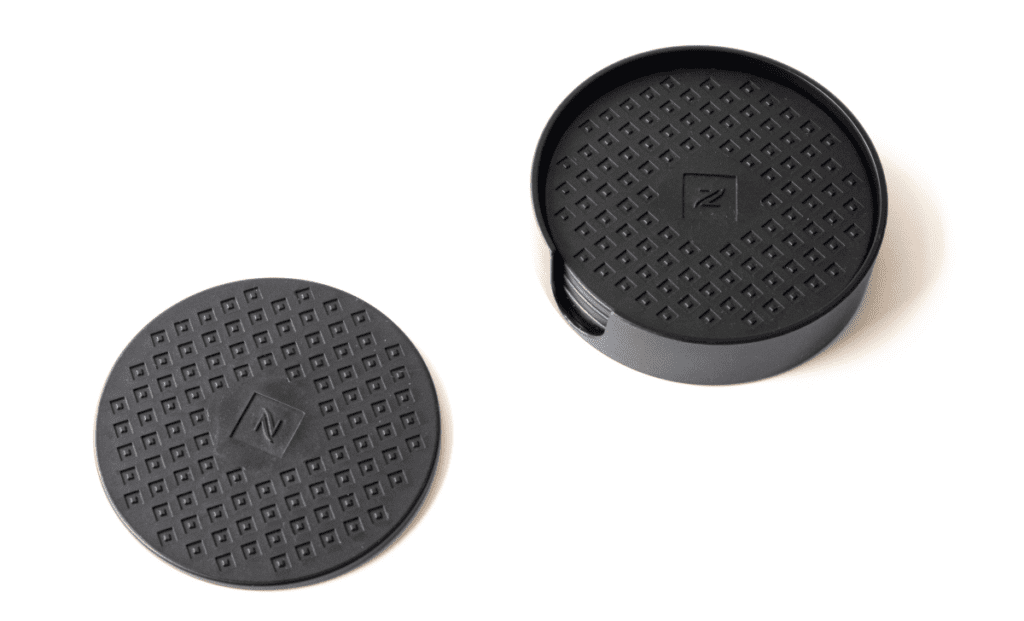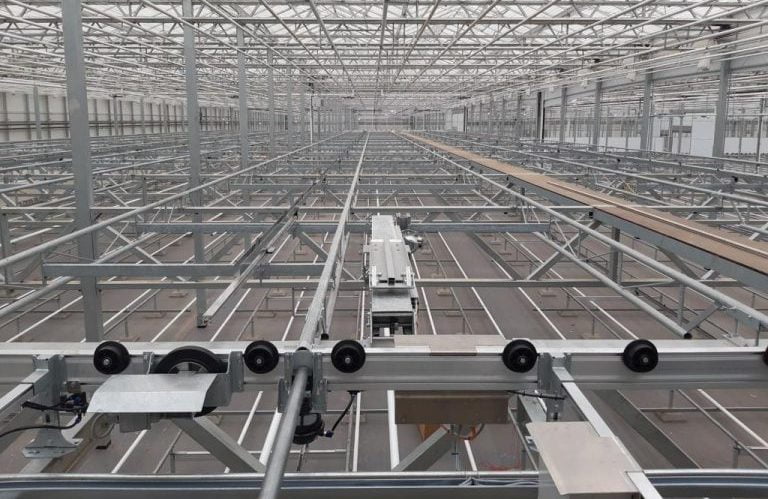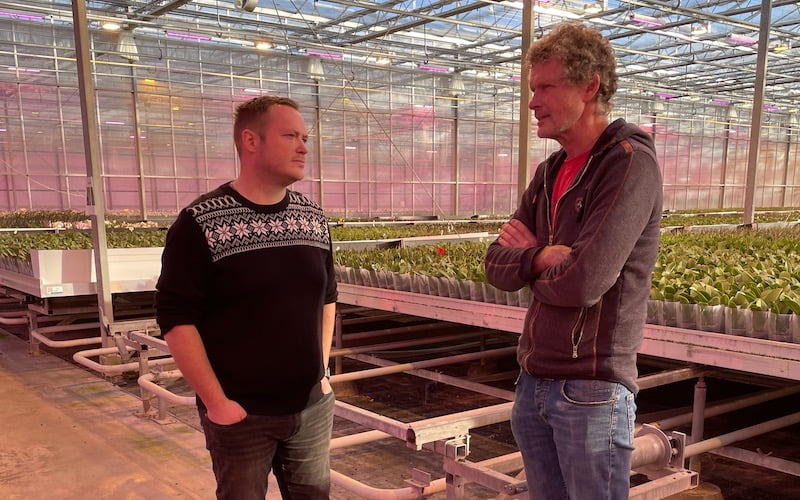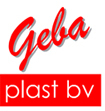Coffee Based

Pure coffee enjoyment. A conversation with Wouter Geldhof about how Gebaplast uses coffee grounds to make new stylish coasters. Reusing something good makes sense. Gebaplast manufactures coffee cup coasters made of biopolymers based on ground coffee. For production we use a CX 130-750 injection molding machine from KraussMaffei. Read more on KraussMaffei’s site about how we produce coffee cups and coasters from coffee grounds, KraussMaffei’s machines and more. View the full conversation here
H.T. Verboom Transport Systems

The solution is always central. As an injection molder of plastic products, our added value lies in thinking along with customers, always focusing on the solution. H.T. Verboom Transportsystemen is one such customer. Herman Verboom, owner, has been a customer of Gebaplast for 10 years and together they have conceived and developed numerous products, after which Gebaplast has manufactured them. We spoke to Herman about working with Gebaplast. Leading the way in greenhouse farming H.T. Verboom Transport Systems develops and sells products and services aimed at improving production processes in greenhouse horticulture. These include material handling and automation, distribution systems, growing tables and repacking stations. In 1998 Herman started as a subcontractor before developing new products himself for his customers. Since then, H.T. Verboom Transportsystemen has grown into a company with 45 employees and is a leading player in greenhouse horticulture. Based in Wateringen, Westland, they think along with the customer, making sure that just the little things that help the system run really well at the customer’s site. ‘Details make the difference,’ says Herman, ‘and that’s where we stand out. Keeping everything as simple as possible is our motto.’ Herman is very modest, because if you look at his company’s site, you will see that they completely unburden their customers when it comes to internal transport. Good cooperation creates new products and solutions Wheels and elevator blocks Gebaplast already produced for HT Verboom Transport Systems. Herman continues, “Then I asked Gebaplast to help me think about developing a number of plastic products that we could use with our customers. We actually tackled this together. This is what I want, I made a drawing of it and this is how I want it,” Herman explains. “And that’s where Gebaplast comes in. Think of these plastic products as pull pawls, positioning pawls, sensor supports, slide blocks and a no-splash watering system. ‘We make a drawing, Gebaplast gives feedback on our initial sketches, and after a few rounds we slap it on and say: this is how it’s going to be. The good thing is that at Gebaplast they really think with you and come up with an alternative if something is not possible in their opinion. ‘Well, we often agree on that, sometimes not,’ Herman says, laughing, ‘but we always come out of it. You have to do it together.’ From idea and first drawing to the final solution is often about 3 to 4 weeks. Then Gebaplast makes a mold and produces some trial products. ‘They then bring those by and we start fitting. Sometimes some fine-tuning is necessary and pretty soon after that the product can go into production.’ No-splash watering system A great example is the no-plash watering system that H.T. Verboom Transportsystemen developed together with Gebaplast. ‘Before, you had water inlets with all these little knees and t-pieces that you could push together. That would turn very often, resulting in the sprinkler spraying up or in the wrong direction. In addition, it always splashed a lot. The no-splash watering system that we developed together with Gebaplast splashes a lot less. You get a kind of film of water, a gentle waterfall, as it were, that gradually waters the table. With this project, we really drew together on the final design, where my idea was eventually translated into a solution in plastic by Gebaplast. In the video and photos on this page, you can see how the no-splash watering system works. Short lines and giving each other space Finally, Herman explains why the cooperation with Gebaplast is so pleasant: ‘We always have good conversations with each other to make the process better for our customer, and that’s where you have to give each other space, always focusing on the solution. You have to make sure you can both grow.
Orchid nursery OK Plant

Reliable partner for challenges in our production process. Gebaplast is more than an injection molding company of plastic products. Our added value is in thinking with customers when they come to us with a challenge, developing from drawing to production and personal contact during these processes. And these are not our words, but the words of our customers, such as OK Plant of Naaldwijk. We went “gardening” with Marcel Olsthoorn, responsible for engineering and production at OK Plant’s three sites. Supermodern company full of ambition Orchid nursery OK Plant is a super-modern and ambitious company, focusing mainly on customers in the high-end segment of Europe. This trend-setting grower of green and flowering plants is based in Westland with three locations and produces over 5,700,000 high-quality orchids, among other things. OK Plant’s products are delivered weekly to garden centers, Cash and Carry and green specialty stores throughout Europe. In order to keep the quality of the products supplied at a consistently high level and to continually come up with new products on the market at an affordable price, innovation is paramount. With the current economic situation and high energy prices, this is sometimes quite a challenge. Adjustments due to high energy costs Walking around the nursery in Naaldwijk, Marcel explains the production process of an orchid. Between cutting and full-fledged plant ready for sale are about 39 weeks. ‘It’s actually similar to pregnancy,’ Marcel laughs. For the vast majority of the growing process, the plant sits in a growing vase. In this plastic vase produced by Gebaplast, the orchid has enough space to grow into a full-sized plant. “Last spring, we figured it would be more difficult to be able to turn on the lights in the greenhouse this winter because of the high price of energy,” Marcel explains. ‘With an orchid in such a growth vase, all the leaves are up and catch light less efficiently. One advantage is that you can fit a lot of plants in a square meter. This makes the product cheaper. But if you also want to make a quality product, there must be enough light on that plant. And if that, due to high energy costs, cannot be done continuously, we thought, then that plant should be placed higher in the growing vase. That way the leaves will lie flatter and thus catch enough light, despite lesser lighting.’ Ellipse ring Gebaplast the solution Meanwhile, we are sitting in the modern and super cozy company restaurant and Marcel continues, “You would say: then make the height of the growing vase lower, however that is not an option for several reasons. Hence, the choice was made to add a ring at the bottom of the growing vase to raise the plant higher in the vase. This ring was designed in collaboration with Gebaplast. This had to take into account the influence of the ring on the plant’s growth process. “A simple ring of PVC, for example, at the bottom of the pot seals off the microclimate of the plant, reducing the plant’s root climate,” Marcel continued, “And so the growth process is slowed or even disrupted. Based on this information, Gebaplast came up with an elliptical ring. This form breaks the “closure”. In fact, there are openings on the sides of the ring. The vase creates a chimney effect as the plants are heated at the bottom. The heat must pass through the growing vase, bringing moisture and flow along the plant, and so the plant grows. The final design, which was created in a process of about 3 to 4 weeks, also takes into account the growth of the roots so that the ring does not stick to the pot when it is removed from the growing vase. Thinking along as a partner is appreciated Having a partner who thinks with you and understands what problems you are facing and what you want to have solved, is highly appreciated by Marcel. ‘This also allowed me to give Gebaplast the space to come up with the right solution. Without mutual understanding and click, this would not have come about. OK Plant has already started infusing the rings. One needs a few more months to ring all the growth vases. At least in 1 location. Next up are the other two sites. To give you an idea, the location where we were guests contains some 2,500,000 orchids. Marcel concludes by saying: ‘ If we have challenges that we encounter in our process. And we think we can solve them in plastic, we contact Gebaplast.’

